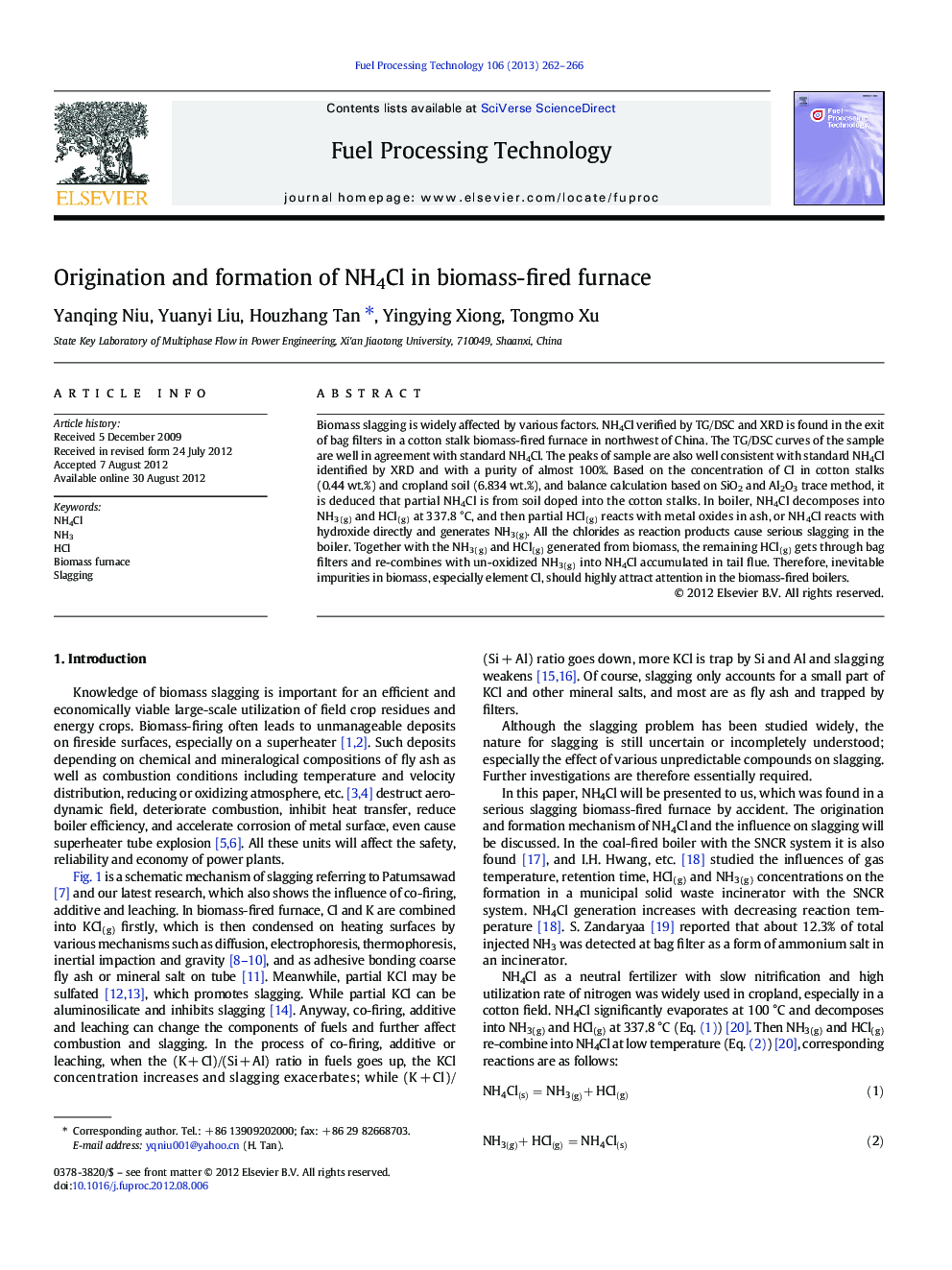| Article ID | Journal | Published Year | Pages | File Type |
|---|---|---|---|---|
| 210060 | Fuel Processing Technology | 2013 | 5 Pages |
Biomass slagging is widely affected by various factors. NH4Cl verified by TG/DSC and XRD is found in the exit of bag filters in a cotton stalk biomass-fired furnace in northwest of China. The TG/DSC curves of the sample are well in agreement with standard NH4Cl. The peaks of sample are also well consistent with standard NH4Cl identified by XRD and with a purity of almost 100%. Based on the concentration of Cl in cotton stalks (0.44 wt.%) and cropland soil (6.834 wt.%), and balance calculation based on SiO2 and Al2O3 trace method, it is deduced that partial NH4Cl is from soil doped into the cotton stalks. In boiler, NH4Cl decomposes into NH3(g) and HCl(g) at 337.8 °C, and then partial HCl(g) reacts with metal oxides in ash, or NH4Cl reacts with hydroxide directly and generates NH3(g). All the chlorides as reaction products cause serious slagging in the boiler. Together with the NH3(g) and HCl(g) generated from biomass, the remaining HCl(g) gets through bag filters and re-combines with un-oxidized NH3(g) into NH4Cl accumulated in tail flue. Therefore, inevitable impurities in biomass, especially element Cl, should highly attract attention in the biomass-fired boilers.
► Confirming the NH4Cl existed in biomass-fired furnace ► Revealing the origination and formation mechanism of NH4Cl ► In biomass-fired furnace, partial HCl and NH3 escape from bag filters. ► Impurities in biomass may affect combustion and slagging.
